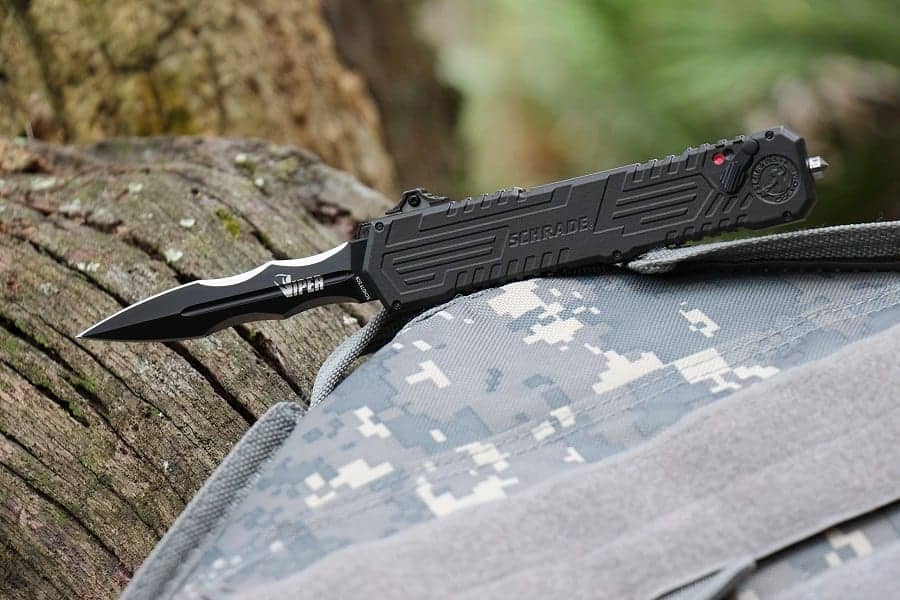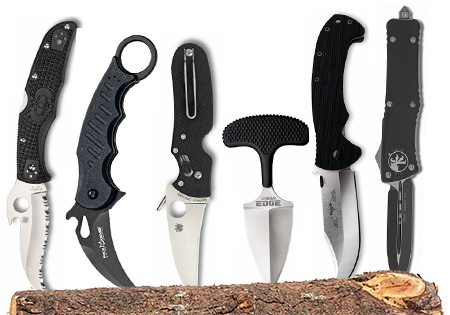Choosing the Best Knife for Self Defense

Selecting the ideal knife for self-defense requires careful consideration of various factors to ensure optimal effectiveness and safety. The decision should align with individual preferences, intended use, adherence to legal restrictions, and enhancement of personal safety.

1. Legal Considerations:

Before choosing a self-defense knife, it’s crucial to research and understand the legal restrictions governing knife possession, carrying, and use in your jurisdiction. Some locations impose size, design, or carrying restrictions on knives, while others may have strict rules regarding when and how a knife can be used for self-defense. This information helps you stay compliant with the law and avoid legal complications.
2. Knife Design and Features:
When evaluating self-defense knives, consider the design, size, and features that best suit your needs and preferences. Common designs include fixed blades, folding knives, and multi-tools.
Fixed Blade Knives: Known for their durability and sturdy construction, fixed blade knives offer a solid hold for forceful defense. However, they can be more difficult to conceal discreetly.
Folding Knives: Folding knives provide a compact and concealable option, making them convenient for everyday carry. They can be quickly deployed when needed. However, the folding mechanism introduces potential weaknesses compared to fixed blades.
Multi-Tools: Versatile multi-tools combine several functions, including a knife blade, pliers, screwdriver, and other tools. They’re ideal if you want a multipurpose tool for both utility and self-defense.
Other considerations include blade length, handle design, weight, and ease of use. Select a knife size that allows for comfortable handling and efficient control, while adhering to legal restrictions. The handle should provide a secure grip in various conditions, and the overall weight should be balanced for optimal maneuverability.
3. Blade Type and Edge:
The blade type influences a knife’s cutting and penetrating capabilities. Common options include straight-edged blades, serrated blades, and combination blades that feature both straight and serrated edges.
Straight-Edged Blades: These blades offer precise cutting and slicing functions, making them suitable for defensive tasks and everyday use.
Serrated Blades: Serrated blades excel at sawing and tearing materials, leading to higher potential for tissue damage in self-defense situations. However, they’re more difficult to maintain and may create ragged cuts.
Combination Blades: Some knives incorporate both straight and serrated edges, offering versatility for various tasks and enhancing self-defense capabilities.
The edge of the blade also plays a crucial role. Double-edged blades offer cutting capabilities on both sides, but they’re less common than single-edged knives due to safety concerns. Single-edged knives, with one sharpened side and one blunt side, are safer and more suitable for self-defense, as they reduce the risk of unintended cuts or harm to the user.
4. Training and Practice:
Choosing the right self-defense knife is just the first step. It’s essential to receive proper training and regularly practice using your chosen knife. This ensures proficiency in handling, deployment, and techniques for effective and responsible self-defense. Seek out classes, seminars, or qualified instructors who can provide expert guidance and help you build the skills necessary for safe and responsible use of a self-defense knife.
In summary, selecting the best knife for self-defense involves considering legal restrictions, choosing a suitable knife design, selecting an appropriate blade type and edge, and ensuring proper training and practice. By carefully evaluating these factors, you can choose a knife that meets your needs, enhances your personal safety, and aligns with legal requirements.






